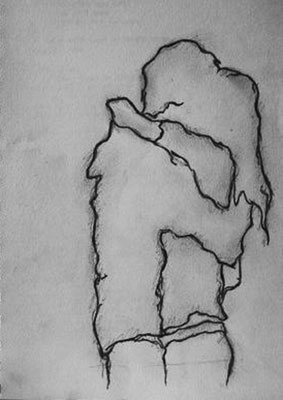All Nonfiction
- Bullying
- Books
- Academic
- Author Interviews
- Celebrity interviews
- College Articles
- College Essays
- Educator of the Year
- Heroes
- Interviews
- Memoir
- Personal Experience
- Sports
- Travel & Culture
All Opinions
- Bullying
- Current Events / Politics
- Discrimination
- Drugs / Alcohol / Smoking
- Entertainment / Celebrities
- Environment
- Love / Relationships
- Movies / Music / TV
- Pop Culture / Trends
- School / College
- Social Issues / Civics
- Spirituality / Religion
- Sports / Hobbies
All Hot Topics
- Bullying
- Community Service
- Environment
- Health
- Letters to the Editor
- Pride & Prejudice
- What Matters
- Back
Summer Guide
- Program Links
- Program Reviews
- Back
College Guide
- College Links
- College Reviews
- College Essays
- College Articles
- Back
Holocaust
Holocaust
Deadly medicine: Creating the master race
In 1933 to 1945, the Nazi Germany carried out a campaige to “cleanse” Germany society of individuals viewed as biological threats to the nations “health”. The Nazi developed racial health policies that began with the mass sterilization of genetically diseased “persons and ended with the near annihilation of European Jewry.
State of Deception: The Power of Nazi Propaganda
•
In Nov, 1918 German revolution overthrows imperial government and creates a republic
•
Sept. 14, 1930 Nazi party wins 107 seat in German parliamentary election.
•
July 14,1933 Germany declared a one- party state under Nazi rule
•
December 8, 1941 First killing operations begins Chelmo im occupied Poland
•
Adolf Hilter was a frontline soldier during World war I
Anne Frank the writer: an unfinished story
Between the ages of 13 and 15 Anne Frank wrote short stories, fairy tales, essays, and the beginning of a novel.
•
The diary of Anne Frank, posthumously published in 1947 and eventually translated into almost 70 languages, is one of the most widely read works of non-fiction in the world.
•
For many, especially younger readers, Anne’s diary is their first encounter with the history of Nazi Germany’s attempt’s to murder all the Jews of Europe during world war II.
Fighting the Fires of Hate: America and the Nazi Book Burning
•
On May 10, 1933 , university students across Nazi Germany burned thousands of books in an ominous “cleansing” of the “un German Sprite “ from German culture.
•
Fighting the Fires of Hate: America and the Nazi, book Burning explores how the book burnings became a potent symbol in America’s battle against Nazism and why they continue to resonate with the public.
Anne Frank was one of over one million Jewish children who died in the Holocaust. She was born Annelies Marie Frank on June 12, 1929, in Frankfurt, Germany, to Otto and Edith Frank.
For the first 5 years of her life, Anne lived with her parents and older sister, Margot, in an apartment on the outskirts of Frankfurt. After the Nazi seizure of power in 1933, Otto Frank fled to Amsterdam in the Netherlands, where he had business connections. The rest of the Frank family followed Otto, with Anne being the last of the family to arrive in February 1934 after staying with her grandparents in Aachen.
In July 1942, German authorities and their Dutch collaborators began to concentrate Jews from throughout the Netherlands at Westerbork, a transit camp near the Dutch town of Assen, not far from the German border.
Nazi Olympics Berlin 1936
For two weeks in August 1936, Adolf Hitler's Nazi dictatorship camouflaged its racist, militaristic character while hosting the Summer Olympics. Softpedaling its antisemitic agenda and plans for territorial expansion, the regime exploited the Games to bedazzle many foreign spectators and journalists with an image of a peaceful, tolerant Germany.
THE 1936 SUMMER OLYMPIC GAMES
In 1931, the International Olympic Committee awarded the 1936 Summer Olympics to Berlin. The choice signaled Germany's return to the world community after its isolation in the aftermath of defeat in World War I.
Forty-nine athletic teams from around the world competed in the Berlin Olympics, more than in any previous Olympics. Germany fielded the largest team with 348 athletes. The US team was the second largest, with 312 members, including 18 African Americans. American Olympic Committee President Avery Brundage led the delegation. The Soviet Union did not participate in the Berlin Games.
Germany invaded Poland on September 1, 1939. Within just three years of the Olympiad, the "hospitable" and "peaceable" sponsor of the Games unleashed World War II, a conflict that resulted in untold destruction. With the conclusion of the Games, Germany's expansionist policies and the persecution of Jews and other "enemies of the state" accelerated, culminating in the Holocaust.
Concentration Camps, 1939–1942
The years 1939–1942 saw a marked expansion in the concentration camp system. In 1938, SS authorities had begun to exploit the labor of concentration camp prisoners for economic profit. In September 1939, the war provided a convenient excuse to ban releases from the camps, thus providing the SS with a readily available labor force.
After the beginning of the war, the concentration camps also became sites for the mass murder of small targeted groups deemed dangerous for political or racial reasons by the Nazi authorities. For example, several hundred Dutch Jews were rounded up in retaliation for a Dutch transit strike in protest of Nazi persecution of Jews in the Netherlands in the winter of 1941. They were sent to Mauthausen in February 1941 where within a few days, the SS staff had killed all of them. Thousands of "security suspects" released from German prisons in the autumn of 1942 were sent to concentration camps and literally worked to death under a program called "Annihilation through Work" (Vernichtung durch Arbeit). Finally, captured members of national resistance movements were sent to concentration camps to be murdered upon arrival.

Similar Articles
JOIN THE DISCUSSION
This article has 0 comments.